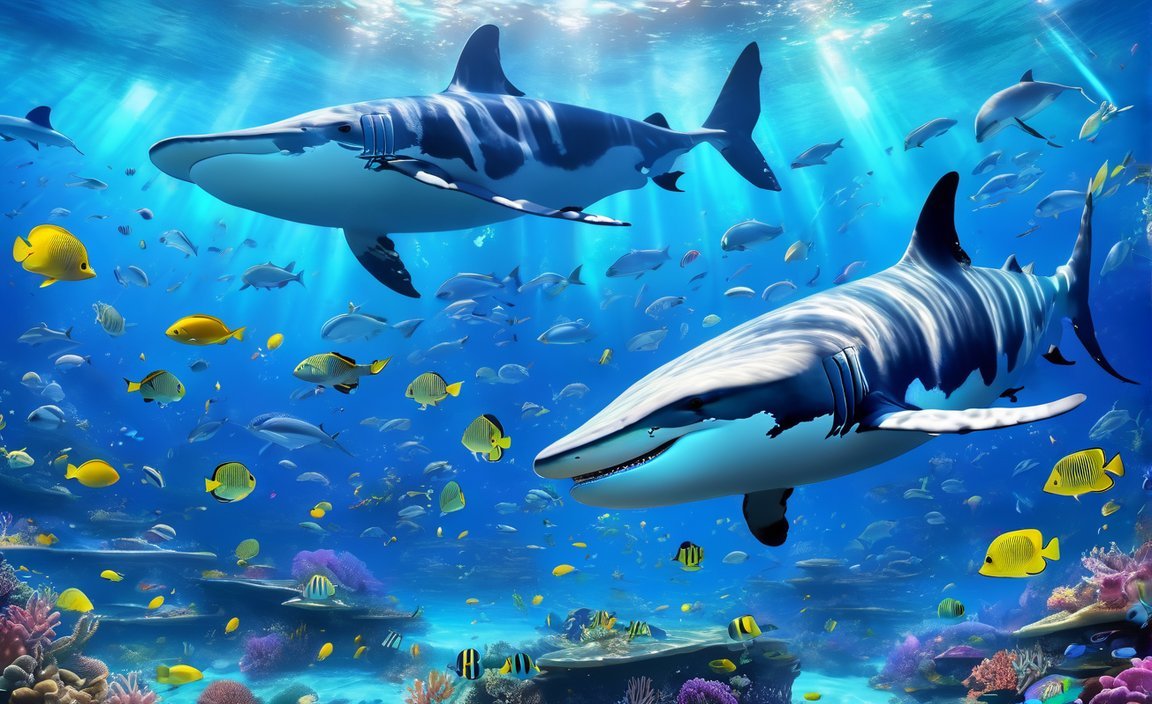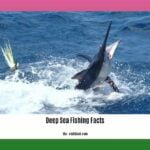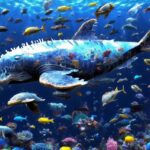Discover the fascinating world of ocean animals with our comprehensive collection of amazing facts. From sea creatures to ocean mammals, reptiles, invertebrates, and marine fish, this article delves into the captivating realm beneath the waves. Whether you’re a passionate marine enthusiast or simply curious about the wonders of the deep, prepare to be mesmerized by the remarkable diversity and unique adaptations of these incredible creatures. Join us as we uncover awe-inspiring facts and share stunning pictures that showcase the beauty and complexity of the ocean’s inhabitants.
Key Takeaways:
- Jellyfish have been around for over 650 million years, predating dinosaurs and sharks.
- Electric eels can produce enough electricity to light up to 10 light bulbs.
- Dolphins sleep with only half of their brain and one eye open for protection.
- The blue whale is the largest known animal in the world and the largest sea mammal.
- Sea turtles have been around since the time of dinosaurs.
- Most sharks are cold-blooded, but some like the great white shark are warm-blooded.
- Marine mammals like sea lions, seals, and walruses are called pinnipeds due to their winged feet.
- Whales communicate through singing.
- The majority of ocean animals are invertebrates, including shrimp and jellyfish.
- Zooplankton, some of the smallest animals on Earth, can only be seen through a microscope and live in the ocean.
- There are approximately one million species of animals living in the ocean.
Amazing Facts About Ocean Animals
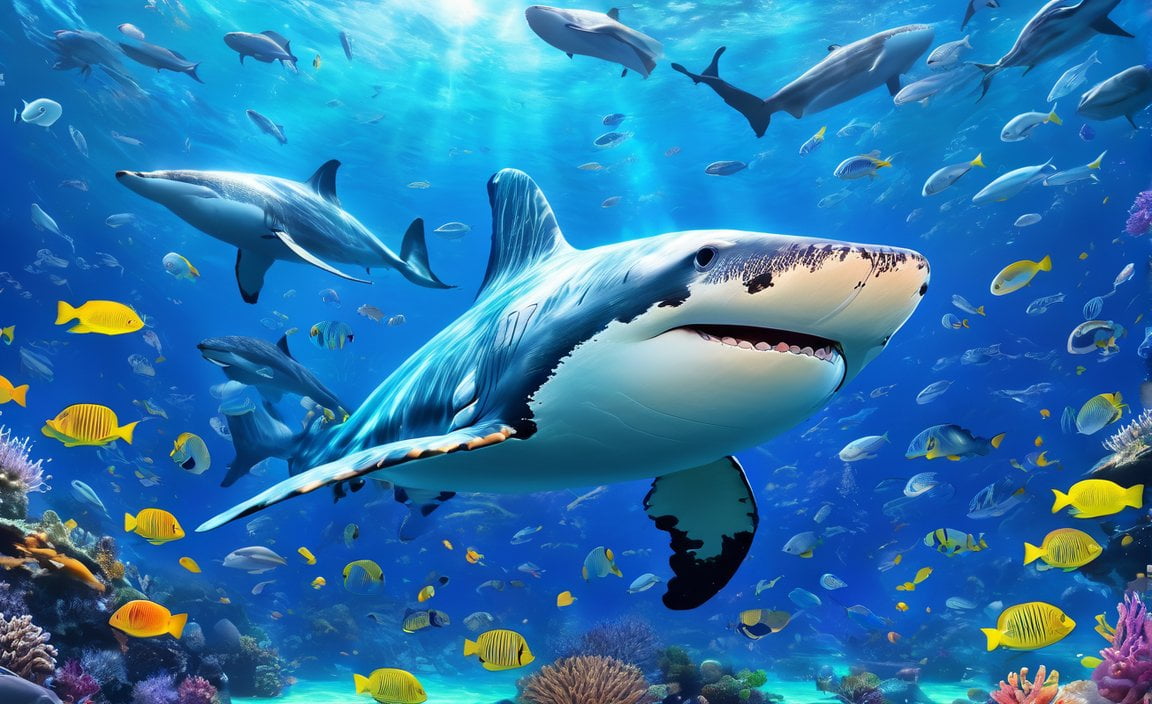
Jellyfish: Surviving through Centuries
- Did you know that jellyfish have been around for more than 650 million years? That’s even before the time of dinosaurs and sharks! These fascinating creatures have stood the test of time and are true survivors of the ocean.
Electric Eels: Nature’s Electric Generators
- Imagine having the power to light up not just one, but up to 10 electric bulbs. Well, electric eels possess this extraordinary ability! They can produce electricity sufficient to create a small light show, making them one of nature’s most shocking marvels.
Dolphins: Sleep with One Eye Open
- Dolphins are remarkable creatures, and their sleeping habits are no exception. Did you know that dolphins sleep with only half of their brain active and one eye open? This unique behavior helps them remain vigilant against predators and threats while still getting some rest.
The Blue Whale: The Mammoth of the Oceans
- Prepare to be astonished because the blue whale is not only the largest sea mammal but also the largest known animal in the world. These majestic creatures can grow up to an astonishing length of 90 feet and weigh as much as 200 tons!
Sea Turtles: Ancient Survivors
- Sea turtles are true survivors from the time of dinosaurs. These ancient creatures have been swimming in our oceans for millions of years, adapting and thriving in various environments. Their resilience and longevity are truly awe-inspiring.
Sharks: A Blend of Cold and Warm Blood
- While most sharks are cold-blooded, there are exceptions. Take the great white shark, for example, which is one of the few species of sharks that possess warm-blooded characteristics. This adaptation allows them to endure colder waters and maintain their body temperature.
Marine Mammals: Pinnipeds with Winged Feet
- Some of the ocean’s most captivating creatures, such as sea lions, seals, and walruses, are called pinnipeds. Why? Well, that’s because they have winged feet! These fascinating appendages enable them to navigate their aquatic habitat with grace and agility.
Whales: Singing in the Deep
- Ever wondered how whales communicate with each other? Well, they do it through singing! These gentle giants can produce intricate melodies filled with various pitches, rhythms, and patterns. Their enchanting songs resonate throughout the ocean, allowing them to connect with others and navigate vast distances.
Invertebrates: The Majority of Ocean animals
- When it comes to ocean animals, most of them are invertebrates. Creatures like shrimp and jellyfish dominate the ocean’s ecosystem, bringing delicate beauty and diverse adaptations to the underwater world.
Zooplankton: Hidden Microscopic Wonders
- In the vast expanse of the ocean, there exists a hidden world that can only be seen through a microscope. Zooplankton, some of the smallest animals on Earth, thrive in the open waters, playing crucial roles in the oceanic food web. These microscopic wonders remind us of the intricate balance of life in the ocean.
The Ocean’s Biodiversity: A Million Species and Counting
- Brace yourself for this mind-boggling fact: the ocean is home to approximately one million species of animals! The sheer diversity of life beneath the waves is awe-inspiring and a testament to the incredible wonders that lie within our planet’s vast oceans.
Life beneath the ocean’s surface never ceases to amaze. These amazing facts about ocean animals provide a glimpse into the captivating world that exists beneath the waves. From ancient survivors to astonishing adaptations, the ocean holds an abundance of wonders waiting to be discovered and appreciated. So, dive in and explore the fascinating realm of ocean animals—you’ll be endlessly amazed!
Check out these amazing facts about sea animals that will leave you in awe! From fascinating ocean creatures to intriguing sea life, you won’t believe what you’re about to discover. Dive into the world of amazing facts about sea animals by clicking here. Don’t miss out on the wonders that await you!
Ocean Invertebrates
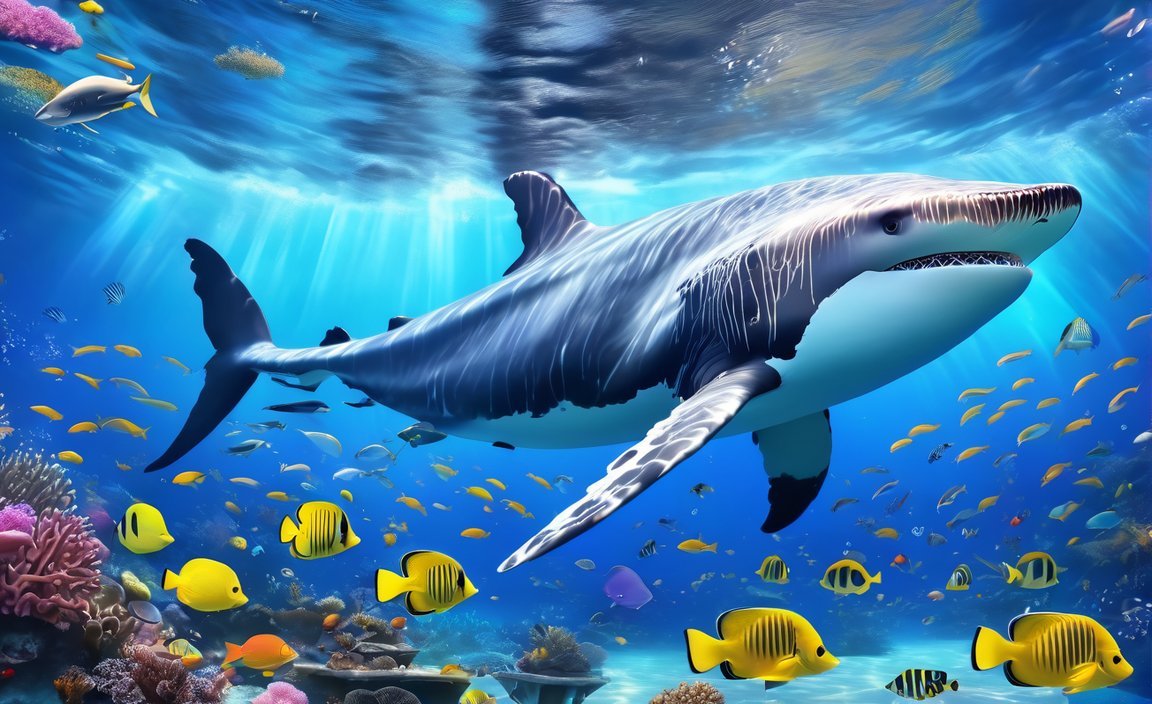
Did you know that the Earth’s oceans are home to around 230,000 known species? And that’s just the tip of the iceberg! With only 5% of our oceans explored so far, there’s a whole world of incredible creatures beneath the surface. Today, we’re diving into the mesmerizing world of ocean invertebrates. These fascinating animals represent the largest group of animals in the ocean and play a vital role in marine ecosystems.
The Diverse World of Ocean Invertebrates
Marine invertebrates are animals that inhabit the ocean and do not have a vertebral column. This diverse group includes a wide range of species, each with their unique adaptations and characteristics. Let’s take a closer look at some of the most common and intriguing ocean invertebrates:
Sponges: These seemingly simple creatures are actually one of the oldest forms of animal life on Earth. Sponges come in a variety of shapes and sizes, and they play a crucial role in filtering and purifying seawater.
Cnidarians: From colorful corals to graceful jellyfish, cnidarians are known for their stunning beauty and unique hunting capabilities. These animals have specialized cells called nematocysts that they use to capture prey.
Marine Worms: Worms may not be the most glamorous creatures, but they play a vital role in maintaining the health of the ocean ecosystem. From polychaetes to flatworms, marine worms come in a wide variety of forms and serve as food for many other marine animals.
Mollusks: This diverse group includes creatures like snails, clams, and octopuses. Mollusks are known for their soft bodies and hard shells, which provide protection from predators. Some, like the giant squid, are truly giants of the ocean!
Arthropods: Crabs, shrimp, and lobsters are just a few examples of the many arthropods found in the ocean. These animals have jointed limbs and tough exoskeletons that offer both protection and support.
Echinoderms: Sea stars, sea urchins, and sea cucumbers are all members of the echinoderm family. Not only are these animals fascinating to look at, but they also play a crucial role in maintaining the balance of marine ecosystems.
The Role of Invertebrates in Ocean Ecosystems
Invertebrates may be small, but they have a big impact on ocean ecosystems. As primary producers, they play a vital role in recycling nutrients and providing food for other animals. Many invertebrates also act as filter feeders, helping to clean the water and maintain its quality.
In addition to their ecological importance, invertebrates also serve as a vital food source for fish, marine mammals, and even humans. From tasty shrimp to nutritious clams, these creatures have been a part of human diets for centuries.
Challenges Faced by Ocean Invertebrates
While ocean invertebrates are incredibly resilient, they face numerous threats in today’s world. Climate change, pollution, and destructive fishing practices are just a few of the challenges these animals have to contend with. Coral reefs, in particular, are in danger due to rising sea temperatures and ocean acidification.
It’s crucial that we take action to protect these amazing animals and their habitats. By raising awareness and supporting conservation efforts, we can ensure the survival of ocean invertebrates for future generations.
Key Takeaways:
- The oceans are home to a staggering 230,000 known species, with marine invertebrates representing the largest group of animals.
- Ocean invertebrates include sponges, cnidarians, marine worms, mollusks, arthropods, and echinoderms.
- Invertebrates play a vital role in ocean ecosystems, acting as primary producers, filter feeders, and a food source for other animals.
- Climate change, pollution, and destructive fishing practices pose significant threats to ocean invertebrates, particularly coral reefs.
SOURCES:
– All That’s Interesting
– NOAA Fisheries
Marine Fish
When it comes to ocean animals, marine fish are some of the most fascinating creatures you’ll encounter. From their incredible adaptations to their diverse behaviors, marine fish never cease to amaze. Let’s dive into the world of marine fish and uncover some amazing facts that will leave you awestruck.
The Fastest Fish in the Ocean
Did you know that the sailfish holds the title for the fastest fish in the ocean? With their distinctive sail-like dorsal fin, these speed demons can reach astonishing speeds of up to 68 miles per hour (110 kilometers per hour). Their slender bodies and long bills allow them to slice through the water with unparalleled agility and speed.
Thirsty Fish?
Unlike freshwater fish, marine fish actually need to drink water. However, instead of gulping it down like we do, marine fish obtain water through the food they eat. The high salt content in the ocean water makes it crucial for marine fish to continuously hydrate themselves.
Pufferfish: Teeth on the Grow
One of the most intriguing facts about marine fish is that pufferfish have teeth that continuously grow. These teeth are known as “beak-like” and are strong enough to crunch through shells and corals. This constant growth ensures that the pufferfish’s teeth remain sharp and effective throughout their lives.
The Swordfish’s Unique Adaptation
The swordfish possesses a unique adaptation that allows it to maintain optimum body temperature in the cold depths of the ocean. Located near their eyes, swordfish have a special muscle that generates heat, keeping their brains and eyes warm. This remarkable feature enables the swordfish to navigate and hunt effectively in various ocean depths and temperatures.
Male Seahorses: The Ultimate Fathers
When it comes to parenthood in the ocean, male seahorses take the spotlight. These remarkable creatures carry the eggs of their mates and undergo pregnancy, giving birth to anywhere from 100 to 2,500 baby seahorses. This role reversal is truly a marvel of nature and showcases the incredible diversity of parental behavior in the underwater world.
Damselfish and Their “Gardens”
If you thought only humans had green thumbs, think again. Damselfish display an extraordinary behavior of creating and tending to their own “gardens.” They cultivate and protect patches of algae on rocks, ensuring a steady food source and shelter for their young. Their gardening skills are truly remarkable and highlight the ingenuity of ocean creatures.
These facts about marine fish are just the tip of the iceberg when it comes to the wonders of the ocean. If you’re eager to dig deeper and explore more fascinating facts about ocean animals, there are incredible resources available. The Oceana Ocean Animal Encyclopedia is an excellent source for information and fun facts about various marine life. Additionally, you can visit the Oceana website to access their comprehensive encyclopedia and expand your knowledge even further.
Key Takeaways:
– The sailfish holds the title for being the fastest fish in the ocean, reaching speeds of up to 68 miles per hour.
– Unlike freshwater fish, marine fish need to drink water to stay hydrated, obtaining it through the food they consume.
– Pufferfish have teeth that continuously grow, allowing them to crunch through shells and corals with ease.
– Swordfish have a special heat-generating muscle by their eyes, enabling them to maintain optimum brain and eye temperatures in cold ocean depths.
– Male seahorses carry the eggs and give birth to large numbers of baby seahorses, showcasing unique parental behavior.
– Damselfish are skilled gardeners, creating and tending to their own algae “gardens” for a steady food source and shelter.
Sources:
– Oceana Ocean Animal Encyclopedia
– Oceana Website
FAQ
Q1: What are marine invertebrates?
A1: Marine invertebrates are animals that inhabit the marine environment and do not have a vertebral column.
Q2: Which group of animals represents the largest in the ocean?
A2: Invertebrates represent the largest group of animals in the ocean.
Q3: What are some examples of marine invertebrates?
A3: Some common marine invertebrates include sponges, cnidarians (corals and jellyfish), marine worms, mollusks, arthropods (such as crabs and shrimp), and echinoderms (such as sea stars and sea urchins).
Q4: Why are invertebrates important in ocean ecosystems?
A4: Invertebrates play a significant role in ocean ecosystems as prey for fish, marine mammals, and humans.
Q5: What threats do corals and other invertebrates face?
A5: Corals and other invertebrates face threats from climate change and destructive fishing practices.
- China II Review: Delicious Food & Speedy Service - April 17, 2025
- Understand Virginia’s Flag: History & Debate - April 17, 2025
- Explore Long Island’s Map: Unique Regions & Insights - April 17, 2025
